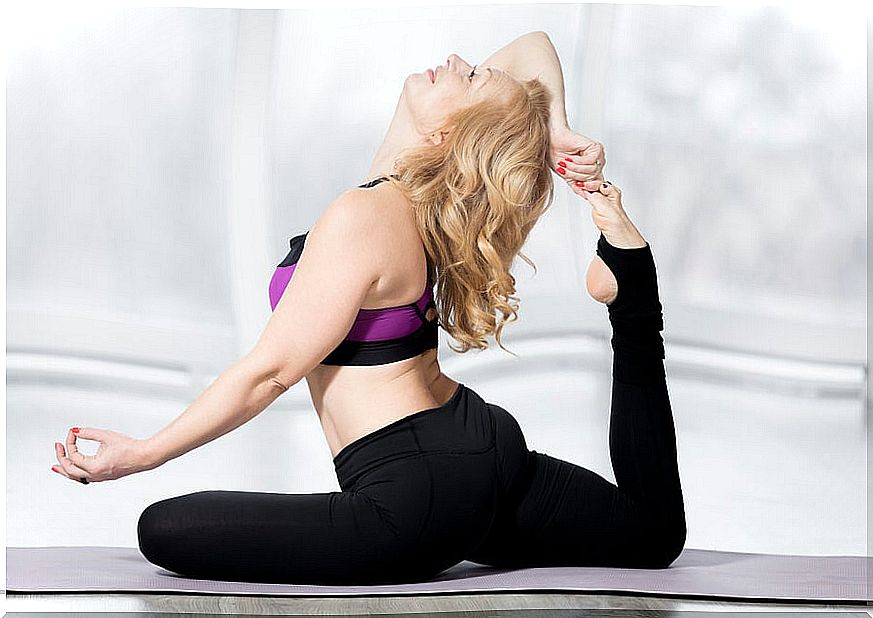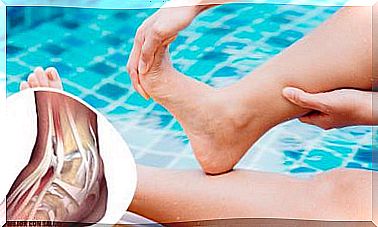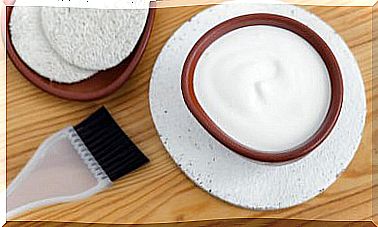3 Hip Flexor Stretches
Hip flexor stretches can, among other things, decrease pain in this region of the body and in the lower back. However, when is it advisable to do them? In what circumstances is it preferable to avoid them? We invite you to learn more about it below.
First of all, you have to be clear about what these muscles are. The hip flexors are the muscles that bring the knee closer to the chest. The most important are the quadriceps and the iliopsoas.
These muscles are always working; when you walk, go up or down stairs or if you change position in the chair, among other movements. In turn, they help stabilize the lumbar spine and hip.
According to a study published by the International Journal of Sports Physical Therapy , stiffness in the hip flexors limits glute activation, something that can affect performance in sports like soccer. Given their obvious importance, it is advisable to keep them in good condition.
When to perform hip flexor stretches
Hip flexor stretches are advisable in the following situations:
- In case of having a feeling of tension or compression in the anterior part of the hip.
- If you have pain in your lower back or hip, especially when you spend a lot of time in the same position — standing or in a chair, for example.
- If you have not previously performed hip flexor stretches to reduce symptoms.
When to avoid hip flexor exercises

Unless your preferred healthcare professional instructs you otherwise, these are common circumstances in which you should not do hip flexor stretches:
Before exercising
Static stretching before doing any physical activity reduces the force that the muscle is capable of doing, as indicated in a study published by the International Journal of Sports Physical Therapy .
This phenomenon is called “stretch-induced loss of strength . ” It is not permanent, but it can decrease athletic performance and predispose the individual to injury. The exception to this rule is usually gymnasts or dancers, due to the particularities and demands of the disciplines they perform.
If it’s the only thing you do to prevent injury
Research published in 2018 states that lack of flexibility in the hip flexors is a risk factor for lower extremity injuries. However, stretching as the sole method of treatment has not been shown to be effective in reducing the incidence of musculoskeletal injuries.
Instead, combined with an individualized exercise program, it can be beneficial in certain cases. To reduce the risks, we recommend that you always consult with a professional in physical activity or physiotherapy.
If you have already done them previously to reduce symptoms
If you have already done hip flexor stretches to reduce any symptoms and there have been no improvements, the intensity of the symptoms has increased, or if the symptoms decrease for a while but then return, it is best not to do these stretches.
It is preferable that you go to your trusted physiotherapist to evaluate you and give you an individualized treatment. There is probably a deeper reason for the discomfort that requires more specific treatment.
How to stretch the hip flexors?
Before moving on to the specific exercises, it should be noted that stretching can be done in different ways:
Static stretching
This is the traditional stretch, where you hold the position for a set amount of time. In general, when you go to do a static stretch:
- The sensation you should look for is a slight stretch, it should not hurt.
- It is recommended to hold the stretch between 15 and 30 seconds and do 3 or 4 repetitions.
- In older adults —65 or older—, it is recommended to hold the stretch between 30 and 60 seconds for best results.
- You can do it 2-3 times a week, as a WebMD site post recommends.
- If you do it after a short warm-up, you will get better results in the short term and reduce the risk of injury from stressing your muscles without preparing them first.
FNP
This acronym stands for “proprioceptive neuromuscular facilitation.” In this case, the contraction and stretching of the muscle you want to work is combined. It is one of the best techniques to improve active ROM – joint range of motion – especially in the short term.
The easiest way to do NPF is with the help of someone else or with an external resistance. To do so, follow these steps:
- Stretch the muscle you want to work.
- Your helper will make light pressure in the direction of the stretch, while you hold them back for 10 seconds.
- At the end of that time, count up to 5 seconds and repeat the process 2 or 3 more times.
Which stretch is better?
According to a study published in the Journal of Sport Rehabilitation , both types offer the same results, only that certain people feel better than the other. So try doing the same stretch with static technique one day and try FNP the next. Stick with the one that makes you feel better afterward. Remember that it is your body, nobody knows it better than you.
3 hip flexor stretches
Before stretching with more intensity, it is essential to master the easier poses first. For this reason, we recommend that you start small and increase the demand as you control each position better.

1. Quadriceps stretch
- Lie on your stomach and grasp the heel of the leg you want to work your glute with with one hand.
- Hold the position if it’s static stretching.
- If it’s FNP, you can resist yourself. Just try to extend the leg while preventing it with the hand that is holding the heel.
- Finally, if you manage to bring the heel to the glute without problem, go to the next stretch.
2. Psoas stretch
For this exercise, we are going to give an example that the objective is to stretch the right psoas:
- Get into a lunge or lunge position , with your left leg in front and your right resting on the floor.
- The left leg will have the foot firmly on the ground and the knee bent to 90 degrees.
- You can rest your right leg on a pillow, cushion, or rolled towel if contact with the ground bothers you.
- Keep your gaze straight ahead, with your trunk perpendicular to the ground.
- Next, contract your right glute and gently push your right hip forward. Don’t lose your trunk position.
- Hold the position if it’s static stretching.
- If it is PNF, press the floor with your knee for 10 seconds.
- By leaning your torso slightly back, you can increase the intensity of the stretch.
3. Quadriceps and psoas stretch
In this third exercise, you must follow the same steps as to stretch the psoas, with the difference that you take the ankle of the leg that you are stretching and bring it closer to the gluteus. This stretch is very intense; master the above before trying it.
Other keys to stretching the hip flexors
There is no such thing as a “perfect” stretch; instead, you have to find the ideal stretch for you and what you need at any given time. Two people can have the same symptoms and need totally different treatments.
In the same way, something that worked for you before may not anymore, and that is normal: the body adapts. Therefore, it is vital that you pay attention to how you feel before, during and after stretching the hip flexors.
Finally, remember that when it comes to the body, the effects are cumulative. The secret is to do it frequently, at least once a day. Be patient and the body will thank you.









